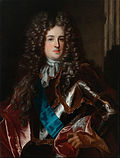| Picture | Name | Born | Death | Parents | Consorts | Functions and Offices |
|---|
 | Stanisław Sobieski | c. 1450 | 1508/1516 | Mikołaj Sobieski
Jadwiga | Małgorzata Krzyniecka | Szlachcic, owner of Sobieszyn |
 | Piotr Sobieski | c. 1460 | after 1508 | Mikołaj Sobieski
Jadwiga | Unknown by Name heiress
of the village Bychawka | Szlachcic, owner of Lędo |
 | Sebastian Sobieski | c. 1486 | 1557 | Stanisław Sobieski
Małgorzata Krzyniecka | Barbara Giełczewska | Szlachcic |
 | Jan Sobieski | c. 1518 | 1564 | Sebastian Sobieski
Barbara Giełczewska | Katarzyna Gdeszyńska | Rotmistrz of Cavalry |
 | Marek Sobieski | c. 1550 | 1605 | Jan Sobieski
Katarzyna Gdeszyńska | Jadwiga Snopkowska
Katarzyna Tęczyńska | Voivode of Lublin Voivodship |
 | Sebastian Sobieski | c. 1552 | 1614 | Jan Sobieski
Katarzyna Gdeszyńska | Anna Zebrzydowska | Court Standard-Bearer of the Crown |
 | Jakub Sobieski | 1590 | 1646 | Marek Sobieski
Jadwiga Snopkowska | Marianna Wiśniowiecka
Zofia Teofila Daniłowiczówna | Magnate
Deputy of the Sejm |
 | Aleksandra Sobieska | c. 1590 | 1645 | Marek Sobieski
Jadwiga Snopkowska | Krzysztof Wiesiołowski | Wife of Great Marshal of Lithuania |
 | Zofia Sobieska | c. 1586 | unknown | Marek Sobieski
Jadwiga Snopkowska | Jan Mikołaj Wodyński | Wife of Voivode of Podlasie |
 | Katarzyna Sobieska | c. 1582 | unknown | Marek Sobieski
Jadwiga Snopkowska | Stanisław Radziejowski | Wife of Voivode of Rawa and Łęczyca
castellan of Rawa Mazowiecka |
 | Gryzelda Sobieska | c. 1588 | 1621 | Marek Sobieski
Jadwiga Snopkowska | Dadżbóg Karnkowski
Jan Rozdrażewski | Voivode of Dorpat
Carver of Queen Constance of Austria
|
 | Marek Sobieski | 1628 | 1652 | Jakub Sobieski
Zofia Teofila Daniłowiczówna | none | Starost of Jaworów and Krasnystaw
Rotmistrz of the Crown Army |
 | John III Sobieski | 1629 | 1696 | Jakub Sobieski
Zofia Teofila Daniłowiczówna | Marie Casimire Louise | King of Poland |
 | Katarzyna Sobieska | 1634 | 1694 | Jakub Sobieski
Zofia Teofila Daniłowiczówna | Władysław Dominik Zasławski-Ostrogski
Michał Kazimierz Radziwiłł | Wife of Deputy Chancellor of Lithuania
and Field Hetman of Lithuania |
 | Jakub Ludwik Sobieski | 1667 | 1737 | Jan III Sobieski
Marie Casimire Louise | Jadwiga Elżbieta Amalia Sobieska | Pretender to the thrones of:
Poland
Prussia
Moldavia
Hungary |
 | Teresa Kunegunda Sobieska | 1676 | 1730 | Jan III Sobieski
Marie Casimire Louise | Maximilian II Emanuel | Wife of Elector of Bavaria |
 | Aleksander Benedykt Sobieski | 1677 | 1714 | Jan III Sobieski
Marie Casimire Louise | none | Prince of Poland |
 | Konstanty Władysław Sobieski | 1680 | 1726 | Jan III Sobieski
Marie Casimire Louise | Maria Józefa Wessel | Prince of Poland |
 | Maria Karolina Sobieska | 1697 | 1740 | Jakub Ludwik Sobieski
Jadwiga Elżbieta Amalia Sobieska | Frédéric Maurice Casimir de La Tour d'Auvergne
Charles Godefroy de La Tour d'Auvergne | Princess of Turenne
Duchess of Bouillon
Last surviving member of the family |
 | Maria Klementyna Sobieska | 1701 | 1735 | Jakub Ludwik Sobieski
Jadwiga Elżbieta Amalia Sobieska | James Francis Edward Stuart | Wife of a pretender to the thrones of:
Scotland
Ireland
England |























